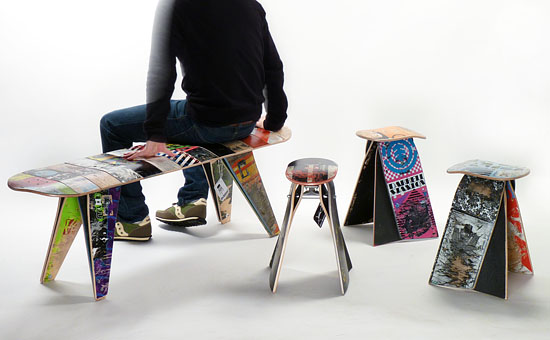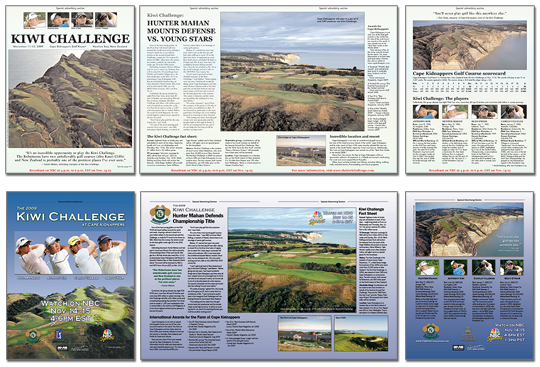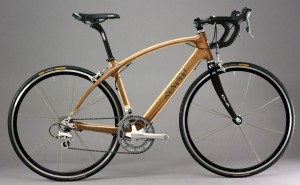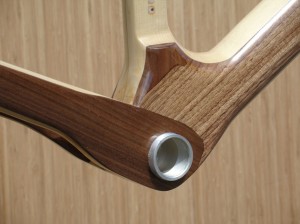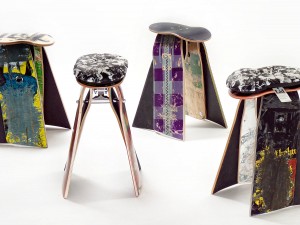 Sometimes, form suggests function, even when that form is broken.
Sometimes, form suggests function, even when that form is broken.
In 2003, Adam Podlaski took his pile of damaged skateboards and brought them to his brother with a demand: make something of them!
With his degree in industrial design from Philadelphia University, Jason Podlaski saw quickly that all of the decks had snapped in one of two ways: either directly in half, or at the one-third mark.
These shapes suggested to him a seat and legs of a chair. And so deckstools were born.
Using an old skateboard truck — the part that holds the wheels — as a connector, Podlaski fashions a half-deck into the stool seat, and four of the longer pieces into legs.
Combined with the zealous effort skaters put into customizing their boards, this makes each piece of furniture completely unique.
You can select your one-of-a-kind stool from the website gallery and snag it for $199.
Recently, Jason and Adam teamed up with Victor Perez of sk8lamps, and show and offer their products at his Fishtown workshop and gallery.
Some new product offerings are on display there, such as the deckbench, and lid cushions that sit atop the wooden stool seats.
Additional collaborations with Perez, who specializes in lamps created from old boards, are forthcoming in 2011.
